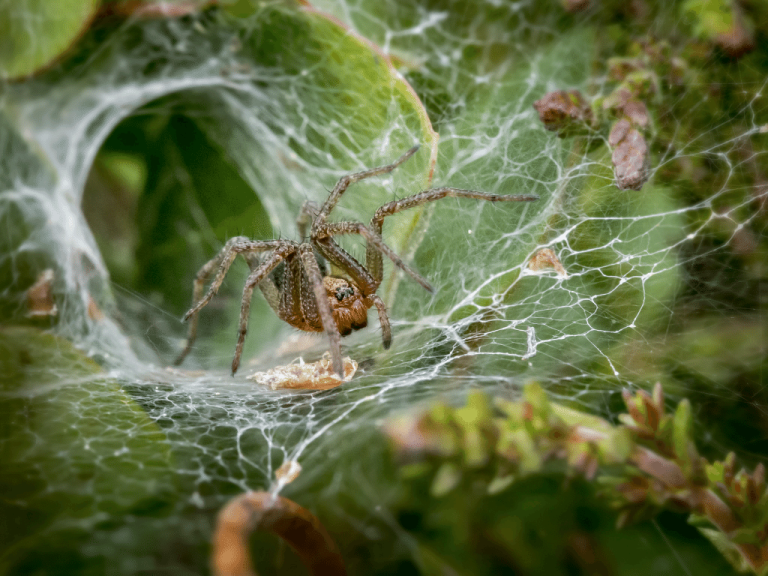Spider webs are hunting grounds for spiders. Flies, horseflies, mosquitoes, beetles, and other pests are the targets of spider hunting. The small flies stuck to the web are like fish trapped in a net.
However, have you ever noticed that those trapped flies in the web have completely empty bodies? These empty shells are the “empty cans” left behind by spiders after finishing their meal.
The body of a spider is divided into a cephalothorax and abdomen. The abdomen is round with a thin waist connecting to the cephalothorax. Inside the cephalothorax, there is an esophagus connected to the sucking stomach. There are six pairs of appendages on the outside, with the front two pairs called chelicerae, which can produce venom used to paralyze insects, and the second pair called pedipalps, which assist in feeding. The remaining four pairs are crawling legs. It lacks chewing teeth, and its mouth is very small, located between the pedipalps. This determines its unique feeding method—first liquefying the food and then sucking it into the stomach. This external digestion method is rare among animals.
When small insects flying in the air accidentally hit the spider web, they are immediately stuck. The spider then uses the venom in its chelicerae to paralyze the prey, wraps it in silk, and then spits out a digestive fluid called enzyme into the prey’s body. This digestive fluid can dissolve proteins, liquefy internal organs, and turn them into juice for the small mouth to suck. Adult shells are not made of protein, so they cannot be dissolved by the digestive fluid. Therefore, the leftover “empty cans” – empty body shells – are left intact on the spider web.

